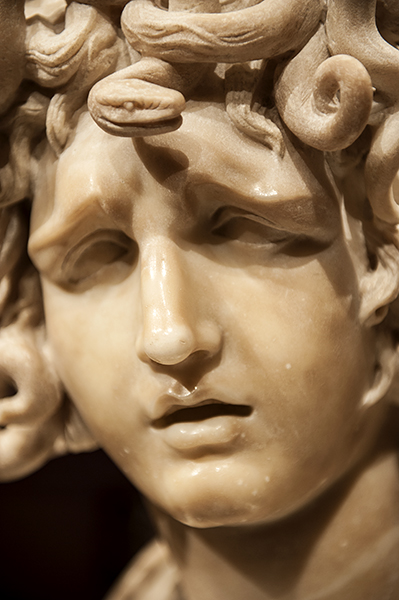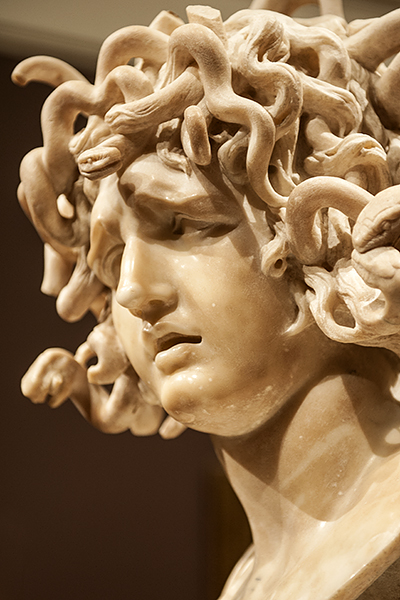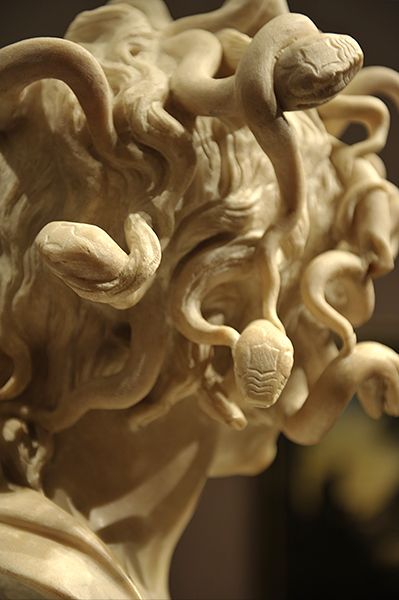
"Perseus replied: 'Since the story you ask for is one worth telling, listen and I shall explain. Medusa was once renowned for her loveliness, and roused jealous hopes in the hearts of many suitors. Of all the beauties she possessed, none was more striking than her lovely hair. I have met someone who claimed to have seen her in those days. But, so they say, the lord of the sea robbed her of her virginity in the temple of Minerva. Jove's daughter turned her back, hiding her modest face behind her aegis: and to punish the Gorgon for her deed, she changed her hair into revolting snakes. To this day, in order to terrify her enemies and numb them with fear, the goddess wears as a breastplate the snakes that were her own creation.'"
Ovid, Metamorphoses (IV.793ff)
A Baroque masterpiece, the bust of Medusa by Gian Lorenzo Bernini probably was sculpted in the decade 1638–1648. Since 1734. it has been in the Palazzo dei Conservatori (Rome), displayed in the Sala delle Oche (Hall of the Geese), so-named from the two bronze ducks that reside there. Situated against a wall, its placement does not allow many other perspectives. The pictures below were taken when the Medusa was on exclusive loan to the Legion of Honor (San Francisco) in 2011.
Unlike most depictions of the Gorgon, Bernini presents Medusa at the moment she perceives herself in an imaginary mirror and realizes that she is being transformed. Her anguish at the metamorphosis is obvious as the tresses of her beautiful hair turn to writhing serpents.




Some of Bernini's most important work, such as the monumental trio commissioned by Cardinal Scipione Borghese—Pluto and Persephone, Apollo and Daphne, and David—are in the Galleria Borghese (Rome), which strictly prohibits any photography. Indeed, all bags, purses, and cameras must be checked at the cloakroom upon admission. But one masterpiece is more readily accessible, the Ecstasy of Saint Theresa in Santa Maria della Vittoria (Rome).